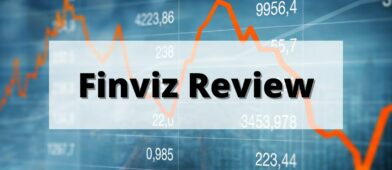Fidelity Investments is one of the biggest investment companies in the world in terms of the number of customers and also total assets under management.
For the longest time, they’ve been competing head-to-head with The Vanguard Group in the mutual fund space. Personally, I’ve been a Vanguard customer for decades but I’ve heard plenty of great things about Fidelity. If I were picking today, either would make a good choice.
With trillions under management, Fidelity mutual funds and ETFs have some of the lowest expense ratios. Even though they are extremely popular, like many companies, they always want more customers. So they will offer different promotions throughout the year to entice people to switch their accounts or simply open a new one with them.
On this page, we will share the best Fidelity Investments promotions they have available.
One note, Fidelity Investments frequently changes their promotions so always check back to see which ones are available right now.
Editor’s Note: Since June 5th, 2024 (and we last checked January 24, 2025), Fidelity hasn’t been offering any transfer bonuses (I was debating moving my Vanguard retirement accounts to Fidelity after the most recent changes).
We list a few other smaller bonuses for other Fidelity products below but there is no large transfer offer. For other brokerage bonuses, check out our post on the best bank bonuses and promotions or click here to sign up for our email newsletter and get notified of bank promotions.
💵 U.S. Bank – up to $450

Earn up to $450 when you open a new U.S. Bank Smartly® Checking account and complete qualifying activities. Subject to certain terms and limitations. Offer valid through April 17, 2025. Member FDIC.
Offer may not be available if you live outside of the U.S. Bank footprint or are not an existing client of U.S. Bank or State Farm.
Table of Contents
| Brokerage | Bonus Promotion | Link |
|---|---|---|
| 🏆 up to $5,000 | Learn more | |
 | up to 20 fractional stocks from the Brokerage+ up to $3,000 from Cash Management | Learn more |
 | up to 25 Free Stocks | Learn more |
| free stock (valued $5 - $200) | Learn more | |
| Up to $500 cash | Learn more | |
 | up to $700 | Learn more |
Fidelity Cash Management – $50 Cash [EXPIRED]
Fidelity offers a Cash Management Account within Fidelity Goal Booster and you can now get $50 in 50 days when you save just $50. Before it was put under construction, the offer was to deposit $50 or more within 40 days and get the $50 – so the active offer is slightly worse than before.
The Fidelity Cash Management account is a brokerage account, so it is not FDIC insured, but uninvested cash could be protected if held at a partner bank.
You are only eligible if you have not taken advantage of a previous Fidelity offer within the last 12 months. This includes Fidelity Bloom offers, Starter Pack, etc.
Plynk Invest – $10
Plynk Invest is an investment app that seeks to compete with a lot of the no-commission trades app like Robinhood. It’s meant for beginner investors who are still learning and there are creative ways to contribute to your account, including exchanging old gift cards.
When you convert gift cards, there’s a small fee but it’s better than keeping the card unused in your desk!
For a limited time, there is only the one sign up bonus:
- $10 sign up bonus – sign up and get $10
$75 deposit bonus – they double your deposit, minimum of $25 and up to $75(this has been removed)
The basic app is free, there is no account minimums, but some features may require a $2 monthly fee in the future.
Fidelity Youth Account – $50 [EXPIRED]
Open a Fidelity Youth Account, designed for teens 13 through 17, and you get a $50 reward. The parent (or guardian) must have a Fidelity account first but the teen just needs to download the Fidelity mobile App, activate a new account, and they get the $50 bonus. No other requirements to get the bonus.
The account has no minimum and no account fees and the bonus is limited to one per customer.
Fidelity Brokerage – Up to $2,500 Cash Bonus [EXPIRED]
Fidelity Investments once offered a cash bonus if you opened an account and transferred new funds. The amount of the bonus was based on the amount you deposited:
- Deposit $50,000 – $99,999 and get $200
- Deposit $100,000 – $249,999 and get $300
- Deposit $250,000 – $499,999 and get $600
- Deposit $500,000 – $999,999 and get $1,200
- Deposit $1,000,000 or more and get $2,500
While this offer is no longer available, it’s comparable to Ally Invest’s new account offer which has this schedule:
| Deposit or Transfer Amount | Your Bonus |
|---|---|
| $10,000 – $24,999 | $100 |
| $25,000 – $99,999 | $250 |
| $100,000 – $249,999 | $300 |
| $250,000 – $499,999 | $600 |
| $500,000 – $999,999 | $1,200 |
| $1,000,000 – $1,999,999 | $2,000 |
| $2,000,000 or more | $3,000 |
Ally Invest offers more for higher balances and they offer cash for lower balances – something Fidelity didn’t. If this offer comes back, I’d take advantage of it if Fidelity is the brokerage you want to work with because Vanguard doesn’t offer any new account bonuses.




Hi Jim,
We are retired this year and have been researching brokerages for retirement(living in not prep).
We did not know bonuses even existed as we were looking deeply into products they carry specific to our needs. We just missed this Fidelity offer and it hurts to see. We are not in a rush but have decided on Fidelity just yesterday.
Do you know if there has been traditional months they offer such generous bonus promotions? Your reply would really be appreciated and a great help in our next step.
Mahalo
Liz
Hi Liz – They change up their offers from time to time but it doesn’t seem to match any kind of season or monthly schedule.
I recently decided to move my investments to Fidelity. Even though they are not advertising a promotional bonus to transfer an account to them, they still offer one. I just called and asked. I was transferred to a representative who enrolled me for a bonus. I shared my computer screen with him, so he walked me through the account creation process. It was necessary to do it this way in order to get the bonus. Do not open an account and then call in requesting a bonus. They have to be on the phone with you while you open the… Read more »
This is great to know, what is the bonus offer?